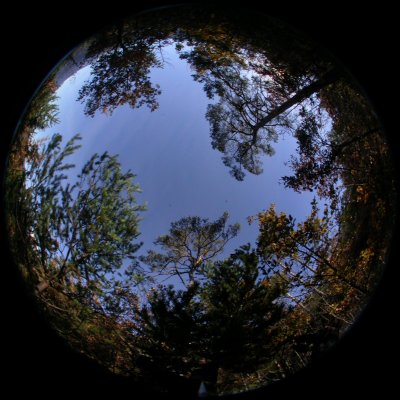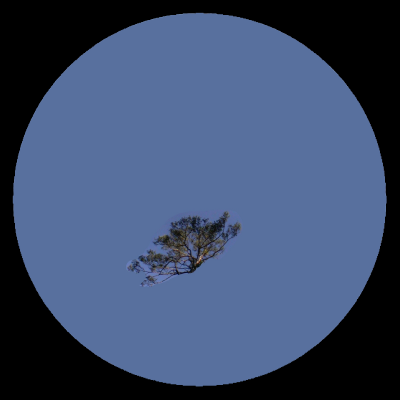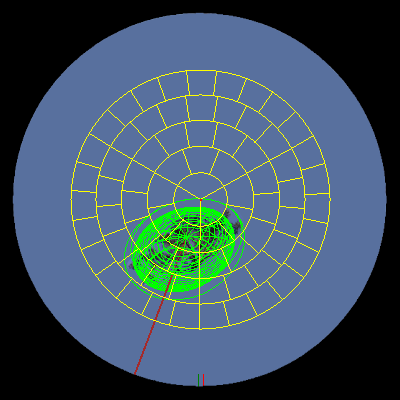


Even it is surpring at first glance, it is easier to estimate the
LAI of a whole forest canopy then the leaf area of a single
tree. Based only on a photograph of a tree, it would even be impossible to guess
its leaf area: the tree could be small but near or big but further away, looking
the same on the picture. It is thus necessary to know, or at least to suppose, what
is the shape of the tree crown and what is its position relative to the camera.
Once this information is available, a number of cells can be defined on the picture,
each corresponding to a limited range of viewing angles. For each cell, the distance
between the camera and the tree crown can be calculated by 3D geometrical analysis.
More precisely, the distances of the front surface and back surface of the crown are
calculated per cell. This gives a range of ditances between the camera and the foliage.
Under the hypothesis that the foliage is uniformly distributed within the volume of
the crown, the projected leaf area (i.e visible area) can be estimated
from the dark (vegetation) and light (sky) pixels. In a last step, the leaf area
itself can be calculated by using an ellipsoidal
projection function according to an hypothesised or otherwise estimated
mean leaf angle.
Hemisfer (from version 3.0 onwards) allows to define the shape, size and position of a single tree by choosing the crown options. This allows then to calculate the leaf area of a tree.
Taking photographs of single tree crowns poses some specific requirements. They are mainly the following.
Separate the crown of interest: as much as possible, the tree crown of which leaf area has to be estimated should be visible as sole foreground on a sky background. This means that the point of view should be chosen so that no other trees or other objects are in front of the target crown or behind it.
Measure the tree and the position of the camera: as soon as a photograph has been taken, the position of the camera relative to the basis of the tree trunk should be measured (if the trunk is not vertical, take instead the point on the ground that is under the center of the crown). Typically, distance, azimut and height should be recorded. For the tree itself, at least the height of the crown basis and the total height need to be recorded. The size and shape of the crown should also be noted. Or a picture from the side could be take if such a free view is possible.
Painting around the crown: Once the pictures have been loaded
on a computer, some more work may be necessary. If other trees are close to the
tree of interest, even not touching it, they could still interfere with the image
analysis. The should thus be hidden by paiting them with a light colour, best with
a colour similar to the sky visible on the picture.
If there is some overlap with the crown of another tree, it is still possible to
use the photograph without loosing too much precision. To achive this, part of the
overlapping area should be painted, so that the foliage area of the target tree
that is hidden approximately equals the area of the other tree that remains
unpainted.
The next 3 images show a picture taken for a singl-tree analyisi of the leaf area. The first is the original photograph taken with a viewing angle of 120° (60° zenith angle). The second picture is after painting everything in blue except the crown to be quantified. The last picture shows how it looks like in Hemisfer with the shape of the crown in light green and the cells for the analysis in yellow. These cells all have the same solid angle.


